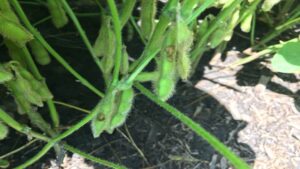Corn Earworms Are Early in Soybeans, Populations Are High, and Moths Are Flying
go.ncsu.edu/readext?1013421
en Español / em Português
El inglés es el idioma de control de esta página. En la medida en que haya algún conflicto entre la traducción al inglés y la traducción, el inglés prevalece.
Al hacer clic en el enlace de traducción se activa un servicio de traducción gratuito para convertir la página al español. Al igual que con cualquier traducción por Internet, la conversión no es sensible al contexto y puede que no traduzca el texto en su significado original. NC State Extension no garantiza la exactitud del texto traducido. Por favor, tenga en cuenta que algunas aplicaciones y/o servicios pueden no funcionar como se espera cuando se traducen.
Português
Inglês é o idioma de controle desta página. Na medida que haja algum conflito entre o texto original em Inglês e a tradução, o Inglês prevalece.
Ao clicar no link de tradução, um serviço gratuito de tradução será ativado para converter a página para o Português. Como em qualquer tradução pela internet, a conversão não é sensivel ao contexto e pode não ocorrer a tradução para o significado orginal. O serviço de Extensão da Carolina do Norte (NC State Extension) não garante a exatidão do texto traduzido. Por favor, observe que algumas funções ou serviços podem não funcionar como esperado após a tradução.
English
English is the controlling language of this page. To the extent there is any conflict between the English text and the translation, English controls.
Clicking on the translation link activates a free translation service to convert the page to Spanish. As with any Internet translation, the conversion is not context-sensitive and may not translate the text to its original meaning. NC State Extension does not guarantee the accuracy of the translated text. Please note that some applications and/or services may not function as expected when translated.
Collapse ▲For many years, corn earworm has been the top pest in North Carolina soybeans in terms of cost of control and losses. Corn earworm is primarily a later-season pest and more common in later-planted soybean. The reason for this is that local populations build up in their primary nursery crop, corn. They pupate in the soil, emerge, and infest soybeans that flower in late-July and August. However, corn earworms also migrate from more southern areas. We have noted corn earworms in soybeans as early as May this year. These were almost certainly migrants from the south and could be why earlier-planted soybeans have abnormally high levels of corn earworms this year.
All soybeans should be scouted for insects, no matter the planting date. For corn earworms, use either a sweep net or drop cloth, and the threshold calculator to determine the economic threshold. Check out this video for a demo of how to scout.
The surest way to prevent loss is to treat at the economic threshold. A common mistake growers make is to not treat soybeans with a low-yield potential. This is a fallacy because corn earworm larvae consume the same amount of pods and seeds whether the crop will yield 20 bu/A or 80 bu/A. In fact, the overall percent of yield corn earworm larvae take will be higher in a low-yielding crop compared to a high-yielding crop.
Soybeans have an incredible ability to compensate for corn earworm feeding and our economic thresholds are based on rigorous data. Recent work from two NC State graduate stduents (supported by the NC Soybean Producers Association) found that varieties with both determinate and indeterminate growth habits compensate equally when fed on by corn earworm. Compensation is more likely when soybeans are not stressed.
In conclusion, growers should be vigilant for corn earworm, especially as larvae complete feeding in corn. After they pupate, moths will emerge to lay eggs in flowering soybeans. Check the light trap network to be alerted to flights. These flights correspond with times when moths are actively laying eggs in crops.
We have a number of effective insecticides, including Blackhawk, Denim, Intrepid Edge, and Steward. Do not use a broad spectrum insecticide (acephate or pyrethroid) unless needed for some other insect. You will wipe out beneficial insects and could flare other pests (we have data showing that they can flare soybean loopers and spider mites have been flared already in 2024). Finally, do not use Besiege, Elevest or Vantacor in soybeans.



